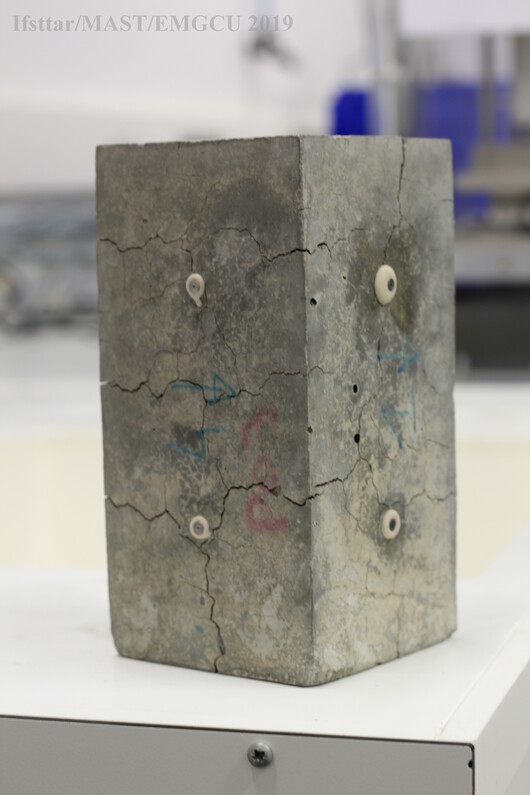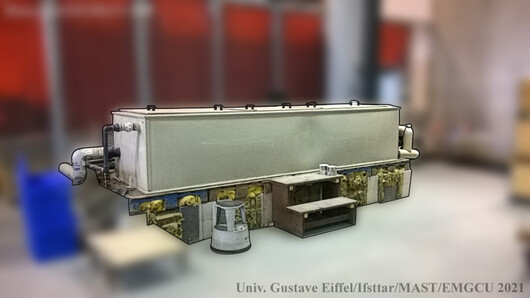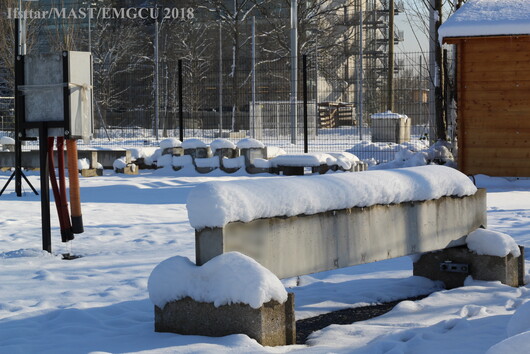Experimental research on concretes affected by DEF and/or AAR

Delayed Ettringite Formation (DEF) and Alkali Aggregate Reaction (AAR) are Internal Swelling Reactions (ISR) that can affect concrete. They lead to expansions, cracking and decrease of mechanical properties. Thus the affected structures raise severe concern in terms of structural integrity and serviceability. To deal with these problems, diagnostic and prognostic tools have to be provided to the structures’ managers facing this problem.
In this context, the EMGCU laboratory of Gustave Eiffel University has conducted numerous studies in this field during the last 20 years. Numerous experimental results are available in the literature to improve the understanding of the expansive mechanisms, of the influencing parameters and of the structural effects of ISR (e.g. (Kchakech, 2015; Larive, 1998; Martin, 2010; Multon, 2004)). This data is also useful for the benchmarking of numerical models that aims to evaluate and predict the condition of the affected structures.
For this research purposes, the EMGCU laboratory has developed specific techniques and experimental equipments to study the ISR:

- Heat treatment device for structural scale specimens
Developed to simulate temperature rises experienced in the core of massive concrete structures that may induce DEF risks (Martin and Toutlemonde, 2013), this device allows applying heatings (up to 85°C). Structural elements up to a length of 3 meters can be prepared. Using the specific concrete mixers of the laboratory, concrete specimens of various geometries and compositions are heat-cured right after casting to trigger DEF processes.

- Climatic ageing laboratories (controlled temperature and humidity)
The atmosphere in these laboratories is regulated in terms of temperature (from 20 to 40°C) and humidity (from 30 to 100% RH). These specific climatic conditions allow accelerating the ageing of the specimens. Tests are performed both at the material and structural scales. The EMGCU laboratory has developed numerous skills in the field of ISR of concrete, performing standard expansion tests but also being able to develop automated monitoring techniques (monitoring of strain, stress, temperature, moisture, etc.).

- Field exposure site
Since 2011, the EMGCU laboratory is conducting research relative to the link between the behaviour of ISR-affected concrete specimens in the field (with processes lasting many years under natural weathering) and in the laboratory (accelerated tests lasting some months under controlled and mostly constant exposure conditions). The final objective is to assess the representativeness of accelerated lab tests as compared to the processes experienced by real structures. Experimental programmes are under progress to study AAR and DEF effects (combined or not). Couplings between these reactions and the corrosion of reinforcement are investigated as well.
- Modelling of structures affected by internal swelling reactions
The EMGCU laboratory of Gustave Eiffel University has developped since the early 2000’s specific models describing the structural effects of internal swelling reactions (mainly implemented in the CESAR_LCPC FE Code) (Baghdadi, 2008; Li et al., 2004; Malbois et al., 2019; Martin et al., 2013; Seignol et al., 2009; Ulm et al., 2000). These models aim to predict the effects of ISR on the affected structures during many decades. They take into account the couplings between expansion, moisture, temperature, stresses (including anisotropy and creep), transfer properties, etc.
![Modeling of a beam affected by an Internal Swelling Reactions [ISR]](/fileadmin/redaction/EMGCU/Phototheque/rgi_beam.gif)
References
Baghdadi, N., 2008. Modélisation du couplage chimico-mécanique d’un béton atteint d’une réaction sulfatique interne (PhD dissertation). Ecole Nationale des Ponts et Chaussées.
Kchakech, B., 2015. Étude de l’influence de l’échauffement subi par un béton sur le risque d’expansions associées à la Réaction Sulfatique Interne (PhD dissertation). Université Paris Est.
Larive, C., 1998. Apports combinés de l’expérimentation et de la modélisation à la compréhension de l’alcali-réaction et de ses effets mécaniques, Etudes et recherches des Laboratoires des Ponts et Chaussées. Laboratoire Central des Ponts et Chaussées - LCPC.
Li, K., Coussy, O., Larive, C., 2004. Modélisation chimico-mécanique du comportement des bétons affectés par la réaction d’alcali-silice : Expertise numérique des ouvrages d’art dégradés, Etudes et recherches des Laboratoires des Ponts et Chaussées. Laboratoire Central des Ponts et Chaussées - LCPC.
Malbois, M., Nedjar, B., Lavaud, S., Rospars, C., Divet, L., Torrenti, J.-M., 2019. On DEF expansion modelling in concrete structures under variable hydric conditions. Constr. Build. Mater. 207, 396–402. doi.org/10.1016/j.conbuildmat.2019.02.142
Martin, R.-P., 2010. Analyse sur structures modèles des effets mécaniques de la réaction sulfatique interne du béton (PhD dissertation). Université Paris Est.
Martin, R.-P., Omikrine Metalssi, O., Toutlemonde, F., 2013. Importance of considering the coupling between transfer properties, alkali leaching and expansion in the modelling of concrete beams affected by internal swelling reactions. Constr. Build. Mater. 49, 23–30. doi.org/10.1016/j.conbuildmat.2013.08.008
Martin, R.-P., Toutlemonde, F., 2013. Theoretical and experimental validation of a simple method to reproduce representative DEF-prone conditions in laboratory. Mater. Struct. 46, 1245–1255. doi.org/10.1617/s11527-012-9967-2
Multon, S., 2004. Evaluation expérimentale et théorique des effets mécaniques de l’alcali-réaction sur des structures modèles, Etudes et recherches des Laboratoires des Ponts et Chaussées. Laboratoire Central des Ponts et Chaussées - LCPC.
Seignol, J.-F., Baghdadi, N., Toutlemonde, F., 2009. A macroscopic chemo-mechanical model aimed at re-assessment of delayed-ettringite-formation affected concrete structures, in: 1st Int. Conf. on Computational Technologies in Concrete Structures (CTCS’09). Presented at the 1st Int. Conf. on Computational Technologies in Concrete Structures (CTCS’09), Jeju, Korea, pp. 422–440.
Ulm, F.-J., Coussy, O., Kefei, L., Larive, C., 2000. Thermo-Chemo-Mechanics of ASR Expansion in Concrete Structures. J. Eng. Mech. 126, 233–242. doi.org/10.1061/(ASCE)0733-9399(2000)126:3(233)
Next topic: